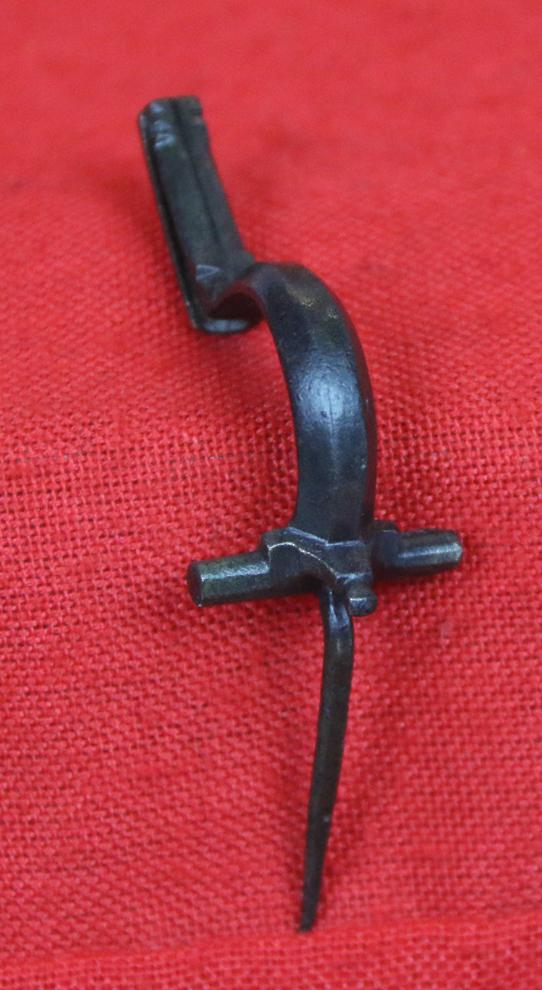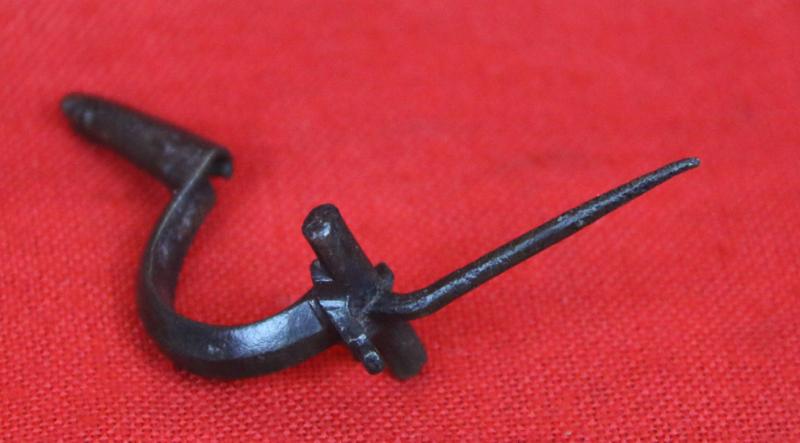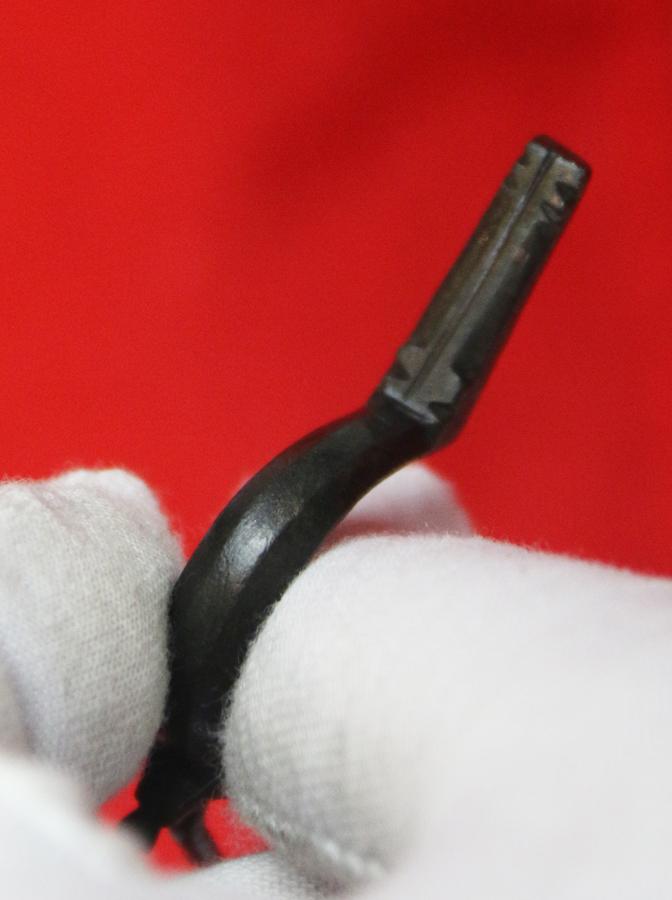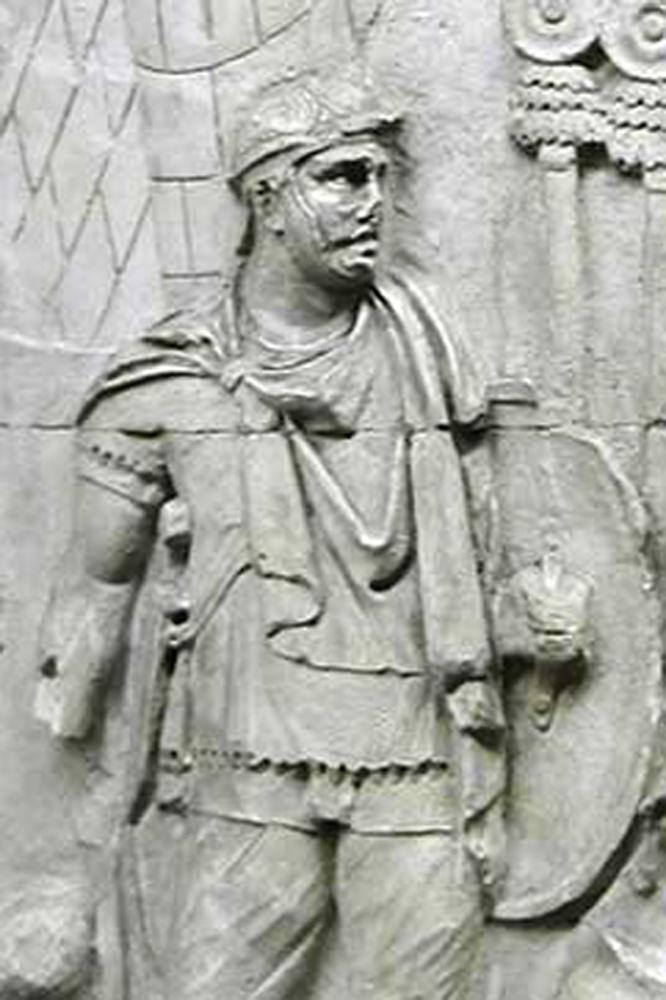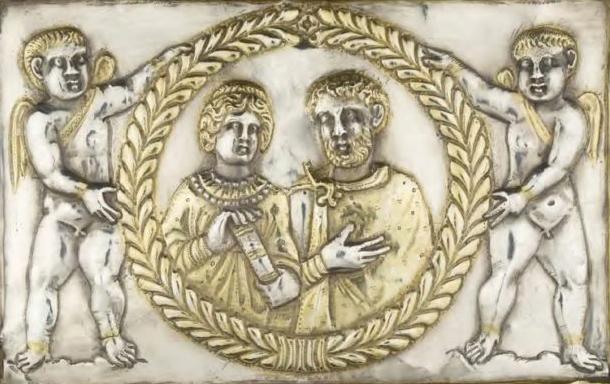Original Ancient Roman ‘Cross-bow” Fibula Bronze Toga Pin Military Issue, Fine Piece For Higher Ranking Figures in the Legion, Such As a Centurion or Tribune
Bow Fibula with a folded or rolled sleeve hinge, c. Early Imperial - Beginning of 2nd Century. We acquired a very small collection of roman toga pins, from super, small collection of original, historical, Imperial Roman and Crusader's artefacts
Shaped in the form of a roman military crossbow fibula, in bronze.
It became the most popular form of closure for Roman fibulae, and is characteristic of the bow brooches from the early imperial times to the beginning of the 2nd century. Outside the Roman Empire and after that time, this type of hinge was seldom used. The sleeve hinge consists of a small sleeve at the top of the head which is forged from a square sheet metal plate and then rolled up. In a center-cut slot, the spiked needle is inserted and held by a shaft (usually iron) passing through the whole sleeve. At the ends of each of the Aucissa fibulae and their early successors were buttons holding the hinge axis; later, the hinge axis was clamped in the sleeve and needed no buttons. The needle always carries a thorn-like projection on its perforated oval plate, which beats against the head of the fibula and, by virtue of this resistance, causes the suspension to spring forth. The sleeve hinge is used exclusively in bow fibulae. The needle is primarily rectilinear, but bends hand in hand with the flattening of the bow to the outside to continue to leave enough space between the bracket and needle. The sleeve hinge is considered a typical Roman construction. The paludamentum was usually worn over one shoulder and fastened with a fibula (ancient version of a safety pin). Arguments abound over what shoulder was exposed, but it seems fairly clear that the garment was fastened loosely enough to move around, The paludamentum was a cloak that was specifically associated with warfare. A general donned one for the ceremonial procession leading an army out of the sacred precinct of the city of Rome and was required to remove it before returning to the city…a sign that he was no longer a general, but a common citizen. The paludamentum or sagum purpura (purple cloak) was the iconic red cloak worn by a Roman general (Legatus) and his staff officers. Originally, it’s distinctive red/purple color clearly delineated between these officers and the rest of the army, which sported the sagum gregale (cloak of the flock). Although the sagum gregale, worn by the rank and file, started out the color of the flock (i.e. undyed wool), it seems likely to have transitioned to a coarser version of the sagum purpura by the imperial period (27BCE – 476CE). Outfitting the entire army in red garments would have been a mark of the great wealth of Rome – well, that and the fact that the Romans controlled the source of purple dye by then.The pin is now frozen through two millennia in a fixed position. Fibula 47mm x 22mm [not incuding pin] 68mm long x 22mm including the pin extended
Code: 23985
245.00 GBP

